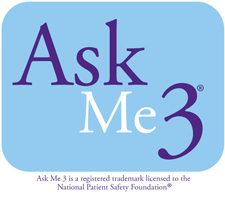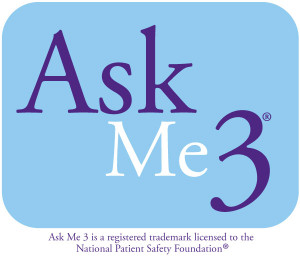
Editor’s note: This week’s guest contribution comes from NPSF President Tejal Gandhi’s blog which looks at health literacy through the lens of patient safety, offering health care professionals guidance in becoming better communicators.
If you’ve ever misheard a conversation or misread directions, you know the pitfalls of written and spoken language. Messages are not always clear, even to those who are normally considered proficient communicators.
Think, then, of the complexities involved in health literacy, which requires not only understanding words, but also following instructions, using numbers, and reasoning. By some estimates only 12% of English-speaking adults in the U.S. are proficient in health literacy. At the same time, those of us in the patient safety field strongly advocate for greater patient and family engagement. It follows then, that we must identify good, useful tools to help patients become engaged and to help health care professionals communicate more effectively.
 The National Patient Safety Foundation program, Ask Me 3, is a patient education program designed to improve communication between patients and health care providers. It encourages patients to become active members of their health care team by asking their clinicians three questions:
The National Patient Safety Foundation program, Ask Me 3, is a patient education program designed to improve communication between patients and health care providers. It encourages patients to become active members of their health care team by asking their clinicians three questions:
- What is my main problem?
- What do I need to do?
- Why is it important for me to do this?
The newest report from the Institute of Medicine takes the patient’s point of view into consideration, defining diagnostic error as the “failure to (a) establish an accurate and timely explanation of the patient’s health problem(s) or (b) communicate that explanation to the patient.” The report comes down firmly on the side of patients being a central part of the solution to improving diagnosis, so it makes sense to view things the way a patient would.
 In its “toolkit” of resources, the IOM report includes a secondary list of questions that NPSF developed several years ago in collaboration with the Society to Improve Diagnosis in Medicine. These questions specifically focus on the diagnostic process:
In its “toolkit” of resources, the IOM report includes a secondary list of questions that NPSF developed several years ago in collaboration with the Society to Improve Diagnosis in Medicine. These questions specifically focus on the diagnostic process:
- What could be causing my problem?
- What else could it be?
- When will I get my test results, and what should I do to follow up?
Question 2— What else could it be?–is particularly important, because it can lead physicians to think twice, potentially avoiding “premature closure.” A 2011 review of research in ambulatory safety published by the American Medical Association defined premature closure as “the failure to continue considering reasonable alternatives after reaching an initial diagnosis.” Though the report found that most diagnostic errors occur through a combination of systems errors and cognitive errors, premature closure was the most common contributing cognitive problem.
October is Health Literacy Month, so there is no better time to start learning more about how we can become better health communicators. The Centers for Disease Control and Prevention offers robust resources to health professionals who want to learn more about health literacy. But there are also relatively simple tactics that clinicians can use to improve communication with patients right now:
- Slow down your speech.
- Limit, and repeat, information at every visit.
- Avoid medical jargon (See Words to Watch).
- Use illustrations to explain important concepts.
- Use easy-to-read written materials.
- Make visits interactive by encouraging questions.
- Use “teach-back” to gauge comprehension.
What will you do this month to improve communication?





